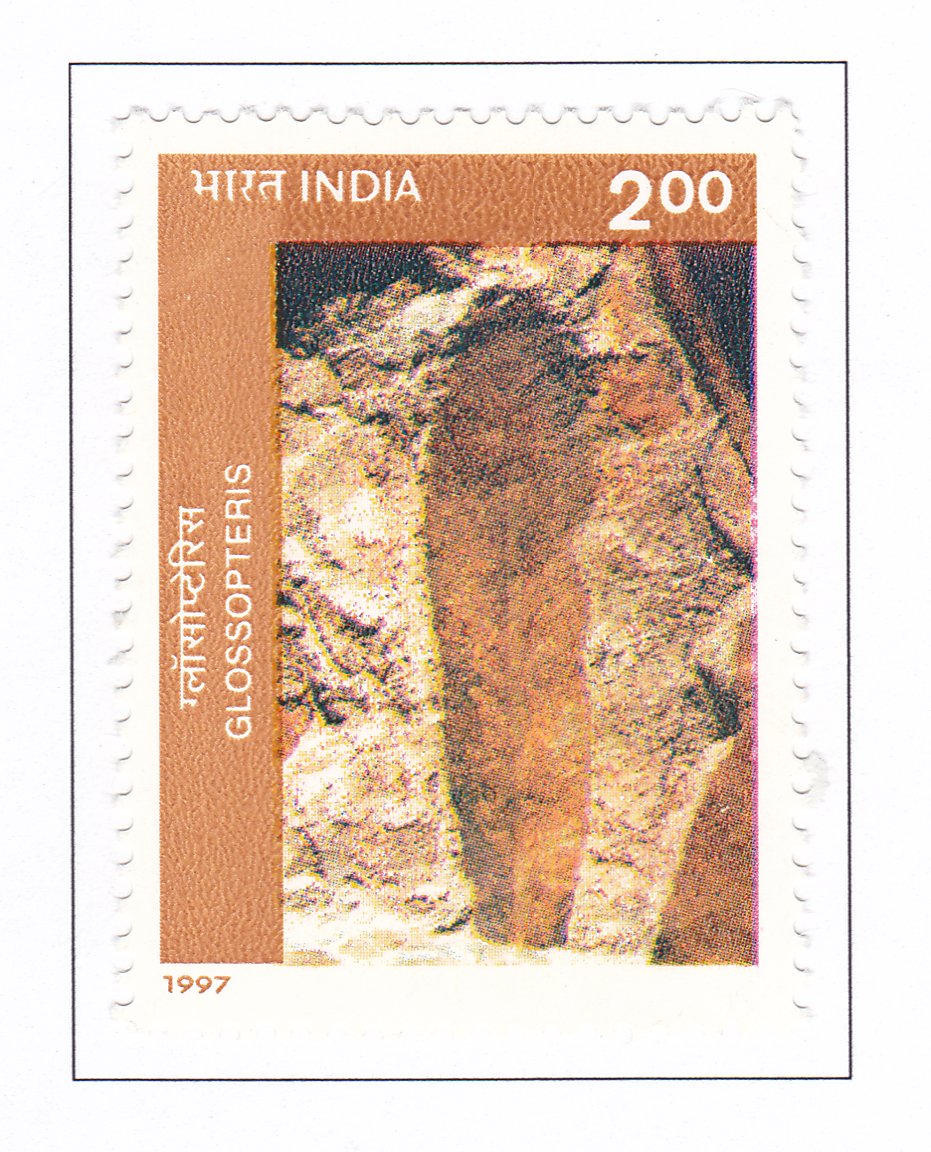Fossil of Glossopteris

Technical Data
| Stamp Set | 50th Ann. of Birbal Sahni Institute of Palaeobotany, Lucknow |
|---|---|
| Date of Issue | September 11, 1997 |
| Denomination | Rs. 2 |
| Quantity | 400,000 |
| Perforation | comb 13 x 13½ |
| Printer | Security Printing Press, Nashik |
| Watermark | No Watermark |
| Colors | Multicolor |
| Catalog Codes |
Michel IN 1569 Stamp Number IN 1623 Yvert et Tellier IN 1339 Stanley Gibbons IN 1733 |
| Themes | Anniversaries and Jubilees | Fossils | Plants (Flora) |
Table of Contents
Commemorative Stamp Set: Birbal Sahni Institute of Palaeobotany, Lucknow – Fossil of Glossopteris
Design Elements:
- The stamp prominently features a detailed illustration of the Glossopteris fossil, a significant prehistoric plant from the Permian period, showcasing its distinctive leaf pattern and venation.
- The background highlights the Birbal Sahni Institute of Palaeobotany in Lucknow, symbolizing its role in advancing the study of paleobotany in India.
- Elements of fossilized plant structures, along with scientific instruments, are subtly integrated into the design, emphasizing the research and discovery theme.
- The color palette reflects earthy tones, with shades of green and brown, representing the natural environment and ancient flora.
Cultural and Historical Significance:
- Glossopteris is one of the most important fossil plants, as it played a key role in the theory of continental drift and the understanding of ancient landmasses like Gondwana.
- The Birbal Sahni Institute of Palaeobotany is renowned for its pioneering research in paleobotany, including the study of Glossopteris and other ancient plants.
- This stamp celebrates India’s contributions to global paleobotanical research and the understanding of prehistoric plant life.
Usage:
- The stamp is intended for general postal use, ideal for collectors, educators, and those interested in natural history and science.
- It can be used to promote awareness about India’s rich paleontological heritage and the significance of fossil studies.
Importance of the Commemorative Stamp Set:
- The stamp set honors the legacy of Birbal Sahni and the institute named after him, highlighting their contributions to the study of ancient flora.
- It serves as an educational tool, inspiring interest in paleobotany and the history of life on Earth.
- The stamp fosters a greater appreciation for India’s role in global scientific research, particularly in the field of paleobotany.
Example of the Stamp Design:
- The stamp measures approximately 4×4 cm, featuring the Glossopteris fossil prominently in the foreground.
- The background includes an illustration of the Birbal Sahni Institute of Palaeobotany, with scientific instruments and other fossil elements integrated into the design.
- The text includes “Birbal Sahni Institute of Palaeobotany, Lucknow” and “Fossil of Glossopteris” in both English and Hindi.
- The Indian Postal Department’s logo and the year of issue are displayed at the bottom of the stamp.
The commemorative stamp set might include:
- A series of stamps featuring other significant fossils studied at the Birbal Sahni Institute, each highlighting different prehistoric plants and their importance in the study of Earth’s history.
- Each stamp in the series could focus on a different aspect of paleobotanical research, such as fossilized wood, seeds, or leaves.
Significance:
- This commemorative stamp set is a tribute to India’s rich scientific heritage and its role in understanding the history of life on Earth.
- It underscores the importance of preserving and studying fossils to uncover the secrets of our planet’s past.
- The stamps celebrate the ongoing work at the Birbal Sahni Institute of Palaeobotany, inspiring future generations to explore the natural world and contribute to scientific discovery.
